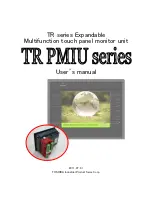
18.10 Ventilation
At points in the system that are at high risk from steam or in roof instal-
lations, only use air separators with manual air vent valves, which
require regular manual venting. This is particularly necessary after fill-
ing.
Correct ventilation of the solar circuit is a prerequisite for trouble-free
and efficient operation of the solar thermal system. Air in the solar cir-
cuit generates noise and puts at risk the reliable flow through the col-
lectors or through individual array sections. In addition it can lead to
accelerated oxidation of organic heat transfer media (e.g. commer-
cially available mixtures of water and glycol).
Air vent valves are used to vent air from the solar circuit:
■ Manual air vent valve
■ Automatic air vent valve
– Quick-action air vent valve
– Air separator
Solar thermal systems with a heat transfer medium have to be vented
for longer than those filled with water. We therefore recommend auto-
matic ventilation in such systems.
For the construction and specification of air vent valves, see chapter
"Installation accessories".
The air vent valves are installed in the solar flow line at an accessible
point in the installation room upstream of the heat exchanger inlet.
P
A
A
Air vent valve, built into Solar-Divicon
When setting up and connecting larger collector arrays, the ventilation
characteristics of the system can be optimised by flow lines joined
above the collectors. This prevents air bubbles from causing flow
problems in individual collectors in partial arrays linked in parallel.
In systems higher than 25 m above the air vent valve, air bubbles that
form in the collectors are dispersed again as a result of the high pres-
sure increase. In such cases, we recommend using vacuum deaerator
systems.
18.11 Safety equipment
Stagnation in solar thermal systems
All safety equipment in a solar thermal system must be designed for
stagnation. If, during insolation on the collector array, heat can no lon-
ger be transferred inside the system, the solar circuit pump stops and
the solar thermal system goes into stagnation. Longer system idle
times, e.g. due to faults or incorrect operation, can never be completely
ruled out. This results in a rise in temperature up to the maximum col-
lector temperature. Energy yield and loss are then the same. In the
collectors, temperatures are reached that exceed the boiling point of
the heat transfer medium. For this reason, solar thermal systems must
be designed to be fail-safe in accordance with the relevant regula-
tions.
Being fail-safe means the following:
■ The solar thermal system must not be damaged by stagnation.
■ The solar thermal system must not pose any risk during stagnation.
■ Following stagnation, the solar thermal system must automatically
return to operation.
■ Collectors and pipework must be engineered for the temperatures
expected during stagnation.
Information regarding design and operation
(cont.)
VITOSOL
VIESMANN
151
5822 440 GB
18










































